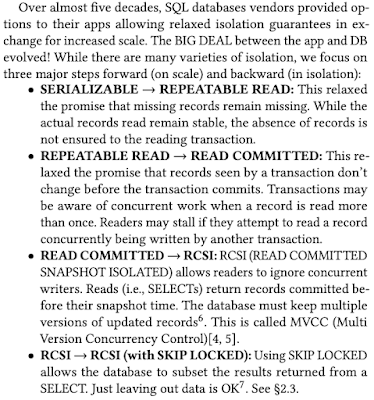Tiga: Accelerating Geo-Distributed Transactions with Synchronized Clocks
This paper (to appear at SOSP'25) is one of the latest efforts exploring the dream of a one-round commit for geo-replicated databases. TAPIR tried to fuse concurrency control and consensus into one layer. Tempo and Detock went further using dependency graphs. Aleksey and I did our usual thing. We recorded our first blind read of the paper. I also annotated a copy while reading, which you can access here . We liked the paper overall. This is a thoughtful piece of engineering, not a conceptual breakthrough. It uses future timestamps to align replicas in a slightly new way, and the results are solid. But the presentation needs refinement and stronger formalization. (See our livereading video about how these problems manifested themselves.) Another study to add to my survey , showing how, with modern clocks, time itself is becoming a coordination primitive. The Big Idea Tiga claims to do strictly serializable one-shot (multi-shot ok with reconnaissance queries t...









